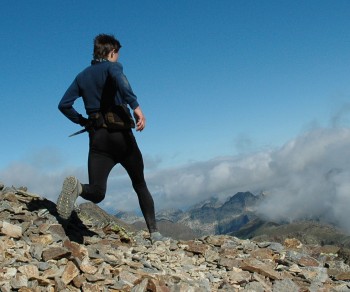THE REPEATED BOUT EFFECT DUE TO DOWNHILL RUNNING
Trainee: Arash Khassetarash (PhD Student, University of Calgary)
Collaborators: Dr Brent Edwards (University of Calgary), Dr Gianluca Vernillo (University of Milano)
SCIENTIFIC SUMMARY

Information about the loading environment of the musculoskeletal system during running provides clues about the pathophysiology of running-related injuries (RRI). Besides trail running and mountain ultra-marathon events, recreational running on city terrains consists of long sections of uphill and downhill running (DR). While the biomechanics and physiology of level running have been largely investigated, the literature regarding DR remains scarce. DR is known to induce lower limb tissue damage/fatigue due to high magnitude eccentric muscle contractions and impact loading. A repeated bout of DR attenuates neuromuscular fatigue and muscle damage compared to the initial bout; a phenomenon called RBE. While some physiological changes associated with RBE have been investigated, changes in running biomechanics and the internal bone loading have not been studied. It is therefore necessary to quantify these parameters to explore the efficacy of training effects in relation to RRI. The objective of this project is to determine the effect of prolonged DR on neuromuscular fatigue (central and peripheral), running economy, lower-extremity biomechanics, and tibial bone strains. This project will link the RBE in DR to possible changes in neuromuscular fatigue, lower-extremity biomechanics, and internal loading of the tibia.
Key words: eccentric exercise, trail running, injury, energy cost of running, running patterns, fatigue.
